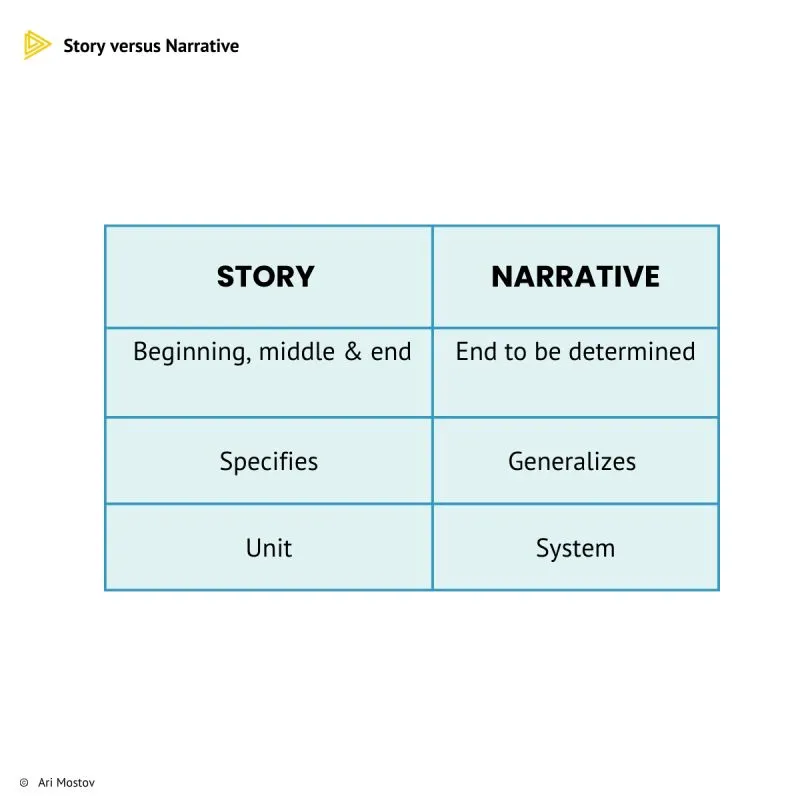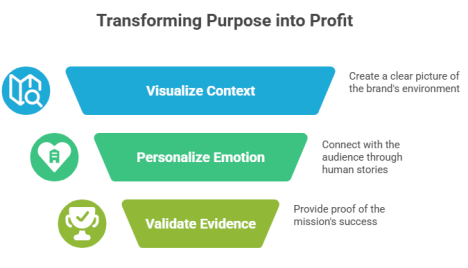Brand Storytelling That Sells: Turning Mission into Market Share

In a marketplace that is overloaded with options, customers have an abundance of choices and very little patience. As a result, price cuts, flashy features, and one-off promotions are not sufficient to keep them returning. The brands that are truly different from the rest are those that convey purposeful, socially responsible stories. Through branding that connects on an emotional level, builds trust, and makes people feel part of something bigger.
If the mission of your brand becomes the core of your storytelling, it will do more than just inspire and motivate. It can convert indifferent visitors into regular customers, and regular customers into brand ambassadors. In other words, a mission that is effectively communicated can have a direct impact on your market share.
From Mission Statement to Market Impact
A mission statement tucked away on your website or hanging on an office wall doesn’t do much on its own. It’s when you bring that mission to life through real, relatable stories that it starts to influence buying decisions.
Take Patagonia as an example. Their mission is “We’re in business to save our home planet” and it might sound broad, but they make it tangible. They share stories about repairing old jackets instead of selling new ones, champion environmental activism, and maintain ethical supply chains. Customers aren’t just buying clothing but they’re buying into a cause.
The takeaway? Your mission needs to step out of the boardroom and into the marketplace through storytelling and intentional branding, which a Branding Agency in Kerala can help you achieve..
Story vs Narrative
It’s important to distinguish between a story and a narrative:

Story vs Narrative – Image Source: Ari Mostov
● Story– A specific sequence of events. Example: the journey of a founder who solved a problem out of personal need.
● Narrative– The overarching message that ties all stories together, reinforcing your mission over time.
If your mission is the “why,” your narrative is the “how” and “what next.” Stories are moments. Narratives are movements.
Brands that master both forms of brand storytelling sell more because they create not just one memorable moment, but an ongoing emotional connection that makes the audience return again and again.
Also Read: The Importance of Branding in Marketing: A Guide for Kerala Entrepreneurs
Why Character Converts Better Than Claims
Awards, credentials, and statistics can help you look credible, but they rarely spark an emotional connection. People connect with personality.
That’s where your mission shapes your brand’s character. Are you bold and disruptive? Friendly and caring? Forward-thinking and innovative?
TOMS Shoes is a great example. They don’t just sell footwear but they embody the personality of a socially conscious friend. Their “One for One” mission is woven into who they are, not just what they promote. That authenticity often converts better than any feature list.
Aligning Storytelling with Customer Aspirations
Your mission might be the heart of your brand, but to sell effectively, your storytelling must connect it to your customers’ aspirations. This means showing them how buying from you helps them become the person they want to be.
If your mission is about sustainability, frame it in a way that lets customers feel like they’re making a difference every time they choose your product. If your mission is about empowerment, highlight stories of customers achieving personal wins.
When your mission and your customer’s personal goals intersect, you create a win-win narrative that drives both sales and loyalty.
To connect your mission with customer aspirations, you need clear brand positioning, a well-defined place in the market that communicates who you are, what you stand for, and why
you’re the right choice. When your positioning is aligned with customer values, every story you tell becomes a reason for them to choose you over competitors.
Human Creativity in the Age of AI Marketing
AI can generate copy, design visuals, and analyze trends but it can’t replace human empathy, values, or creativity.
The most successful brands in an AI-driven marketing world will:
● Use AI for research, ideas, and insights.
● Apply human creativity to shape authentic, mission-driven stories.
● Make sure every piece of communication reflects values, not just algorithms.
In short, let technology help you scale, but let your human voice carry the message.
The VPV Method

If you want your mission-driven storytelling to inspire action and drive sales, use the VPV Method:
● Visualize (Context) – Paint a clear picture of the world your brand operates in. Show the challenge, need, or opportunity that your mission addresses, so your audience instantly “gets it.”
● Personalize (Emotion) – Bring it down to a human level. Share real experiences, emotions, and stories that make people feel the stakes and care about the outcome.
● Validate (Evidence) – Back your words with proof. Use testimonials, measurable results, awards, or media features to show your mission isn’t just talk—it’s working.
This method keeps your storytelling both heart-led and results-driven, so it connects emotionally while earning customer trust.
Also Read: The Impact of Direct Marketing and Branding on Business Growth in Kerala
Managing Perception: The Silent Sales Driver
Telling a great story once isn’t enough. You have to live it every day. Every customer interaction, from your packaging design to how your support team handles complaints, should reinforce your mission.
When your actions consistently match your words, you reinforce your Brand Identity and earn trust. And trust is what turns interest into purchase.
Common Pitfalls to Avoid
Telling stories about your brand’s mission can be incredibly powerful but it’s also easy to get it wrong. Here are a few common mistakes brands make, and why they can weaken your impact instead of boosting it.
1. Being Too Vague
If your mission statement could fit any company in any industry, it’s not going to stand out. Generic lines like “We make life better” or “We care about our customers” might be true, but they’re too vague to spark real interest or action. People should immediately know what you stand for and why it matters to them.
For instance, saying “reducing food waste through smart packaging” is far more memorable than “improving sustainability in the food industry.” The more specific and concrete your mission is, the easier it is for people to imagine it and believe in it.
2. Overpromising
One of the fastest ways to lose trust is to make bold mission claims you can’t back up. Saying you’re “100% carbon-neutral” or “changing the world” might sound impressive, but if customers dig deeper and find gaps in your actions, the damage to your reputation can be lasting.
Your mission story has to be grounded in reality. That doesn’t mean you have to be perfect, it means you have to be honest. If you’re working toward being carbon-neutral, say that. Share the steps you’re taking and your timeline. People respect progress and transparency more than empty promises.
3. Making the Story Only About You
It’s tempting to tell your mission story as if your brand is the sole hero of the journey but that can leave customers feeling like passive spectators. In reality, people want to feel like they’re part of the mission.
For example, instead of “We donate to build schools in rural areas,” try “Every purchase you make helps build schools in rural areas.” See the difference? The second version puts the customer inside the story, making them an active participant in the change you’re trying to create.
4. Neglecting to Live the Mission Internally
Your mission story can’t just be a marketing campaign but it has to show up in your culture, policies, and daily operations. If your mission is about wellness, but your employees are overworked and burnt out, the disconnect will eventually show.
Authenticity starts inside the company. The way you treat your team, the suppliers you work with, and the causes you support all add layers of truth to your story. When the inside matches the outside, customers can feel it and that’s when loyalty grows.
5. Telling It Once and Forgetting About It
A mission isn’t a “set it and forget it” kind of thing. If you tell your mission story during a product launch but never mention it again, it will fade from customers’ minds.
The most successful mission-driven brands weave their story into their social media captions, their product descriptions, their events, even their customer service scripts. Consistency turns a mission from a slogan into a lived experience for your audience.
Final Thought
Your mission is your most powerful sales asset when it’s lived out in stories that your audience can see themselves in. By embracing brand storytelling, you’re not just telling people what you do, you’re inviting them to be part of why you do it.
dExito is a Result-Driven Digital Marketing Agency in Kerala, delivering customized strategies to grow your brand online. Our skilled team focuses on data-driven campaigns and Performance Marketing Solutions that drive measurable results. As a trusted partner, we help businesses convert traffic into leads and transform leads into loyal customers.

Salmanul Faris, Founder of dExito Branding, is a seasoned Performance Marketing Expert with over 8 years of experience in Google Ads and Meta Ads. He specializes in helping businesses across India and the GCC achieve measurable growth through data-driven marketing strategies. Amidst his dynamic role at dExito, he shares insights on the latest trends in digital marketing and performance marketing, helping brands stay ahead in the competitive digital landscape